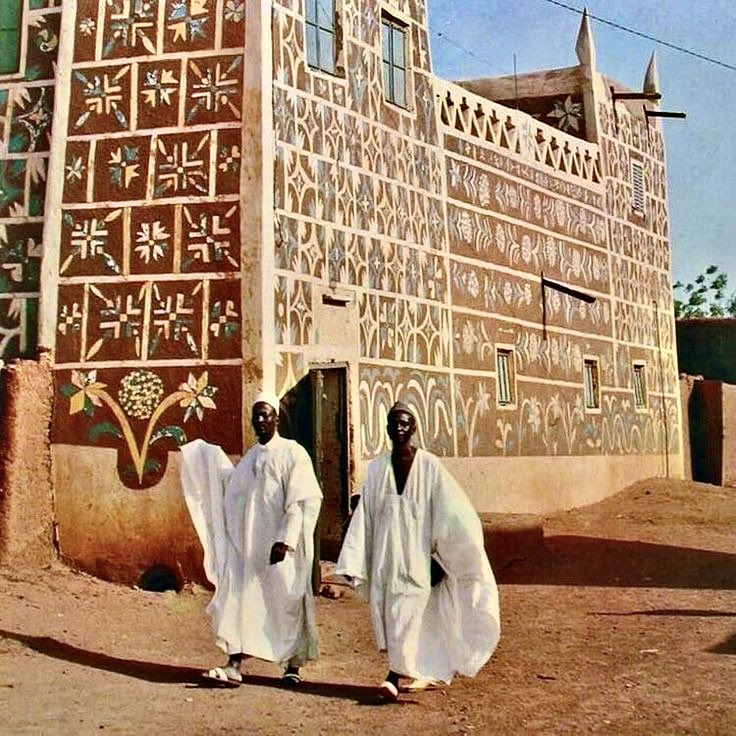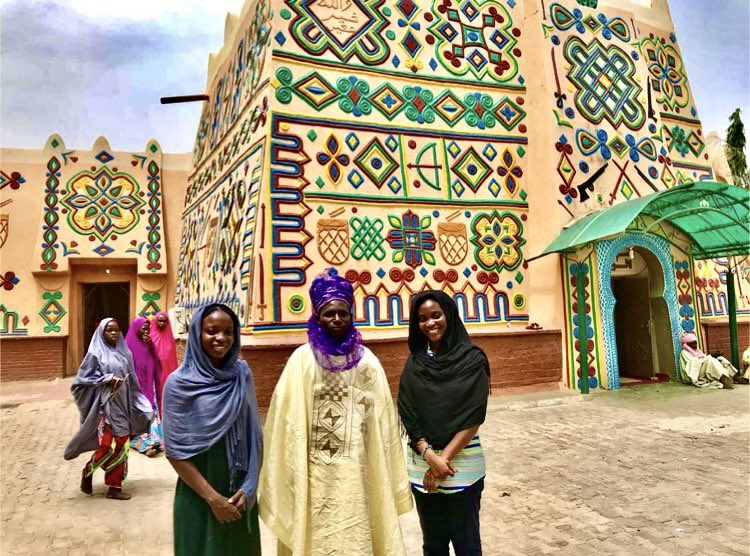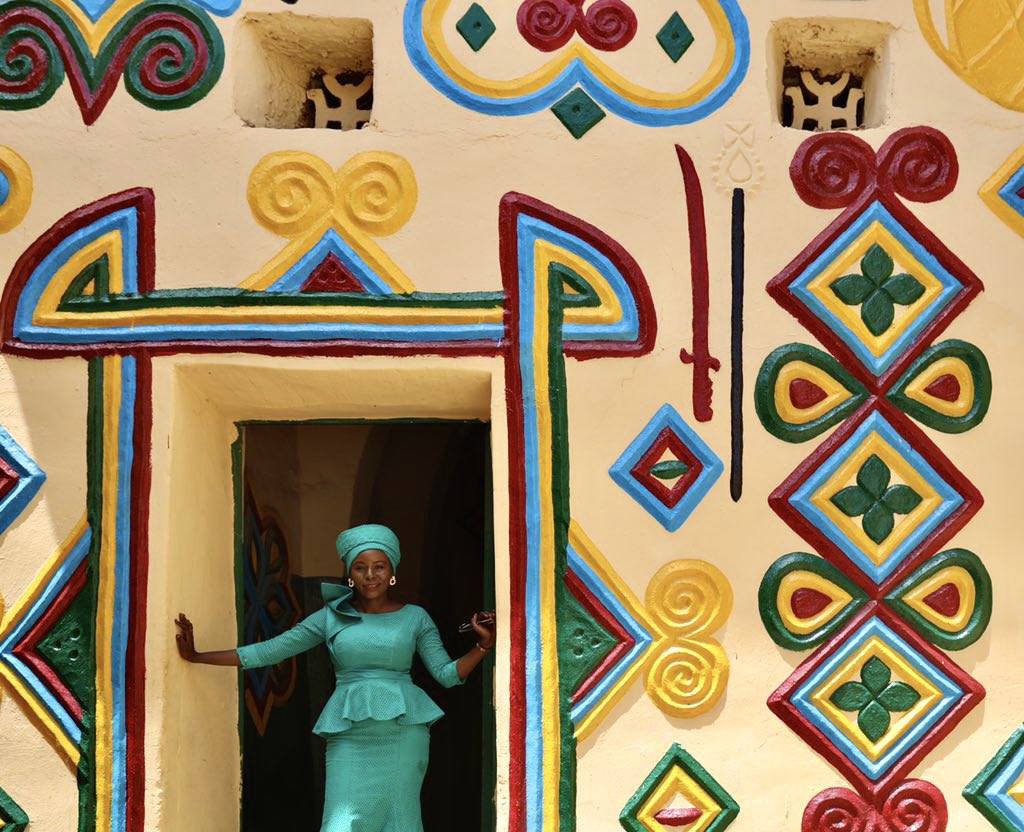Hausa architecture from Northern Nigeria, is perhaps one of the least known but most beautiful aspects of Hausa culture. It has been in existence for thousands of years & is characterised by bright, colourful, intricately engraved buildings.
A thread on Hausa architecture…
A thread on Hausa architecture…

2/ The Hausa people are the largest ethnic group in West & Central Africa, known for their cultural unity & diverse backgrounds. They primarily reside in southern Niger & northern Nigeria, specifically in the Sahelian & savannah areas, forming a culturally homogeneous community. 

3/ Hausa traditional architecture plays a vital role in fostering a deep connection between the Hausa people and their surroundings, forming a sense of interrelatedness. 

4/ The design of a Hausa compound, the fundamental living space for extended families, follows a structured arrangement of spaces that align with an implicit cultural paradigm. 

5/ Influenced by Islam, Hausa architecture embodies a meticulously organized spatial structure that serves as a medium for expressing the distinctive characteristics of Hausa culture. 

6/ Traditional Hausa architecture predominantly utilized simple local materials like mud, stones, grass, corn stalks, and thatch made from straw to construct their buildings. 

7/ Tubali, sun-dried bricks made from mud, are commonly used in Hausa architecture. A mixture of mud and straw is employed as plaster for concrete walls. Indoor arcs typically serve as entrances to the compounds. 

8/ Hausa architecture is completely sustainable &non-toxic. Moreover, the technology and skills required for construction are transferrable to future generations, ensuring the continuity of this architectural tradition. 

9/ Traditional Hausa architecture can be classified into three main categories: calligraphy, surface design & ornamental. Many of these distinctive designs are still prevalent today, particularly in the palaces of Emirs located in various northern cities, such as Kano in Nigeria 

10/ While only a limited number of original earth structures remain, such as well-preserved monuments and mosques, the practice of constructing with earth remains a resilient cultural tradition among rural communities across the continent. 

11/ In the traditional Hausa construction practices, the roof has long been regarded as the most intricate aspect, presenting challenges both in terms of the technology needed to support the structure and the ornamental decorations applied to it. 

12/ Hausa traditional architectural decoration involves wall engravings crafted by skilled traditional builders. These artisans employ a diverse array of abstract & decorative motifs, drawing inspiration from Hausa patterns, relief designs, and arabesque motifs 

13/ Hausa traditional builders are likeartisans. They exhibit remarkable skill in creating intricate patterns directly on the walls, drawing freehand designs before meticulously carving them out. 

14/ Among Hausa designs, the prevalent motifs include the Dagi knot, the staff of office, and the sword, along with various abstract patterns. Initially, these motifs were larger in size and used sparingly. However, in the 20th century, newer builders adopted smaller motifs that… https://t.co/AcqE12xqFRtwitter.com/i/web/status/1…


15/ As a result, the intricacy of a facade decoration often serves as an indicator of the owner's wealth and social status. 

16/ The Emir's Palace in the historic city of Zazzau (Zaria) is an exceptional display of Hausa architecture, emanating a strikingly vibrant and captivating beauty. 

18/ Pinnacles, known as Zankwaye, represent another significant component of Hausa architecture. These distinctive features come in a variety of shapes and sizes, imparting a characteristic form to the structures they adorn. 

19/ Resembling the horns of a bull, Zankwaye were initially reinforced vertical projections situated along the parapet wall of the roof. These practical additions served as convenient access points for builders to ascend onto the roof for construction or repair purposes. 

20/ The growing interest in using modern building materials to make traditional Hausa constructions is not only for cultural continuity, but also part of the movement towards sustainable architecture; creating buildings that are durable, affordable & culturally enriching 

21/ Discover more about the art, heritage and history of Hausa architecture, with sources...
baytalfann.com/post/the-art-o…
baytalfann.com/post/the-art-o…
Want to know more about Islamic architecture?
Join us this Thursday for a fascinating online event exploring the past, present, and future of Islamic architecture.
Thursday 20 July
1:00pm - 2:30pm BST
If you can’t attend live don’t worry, everyone registered will receive a… https://t.co/GYt71Lhraltwitter.com/i/web/status/1…

Join us this Thursday for a fascinating online event exploring the past, present, and future of Islamic architecture.
Thursday 20 July
1:00pm - 2:30pm BST
If you can’t attend live don’t worry, everyone registered will receive a… https://t.co/GYt71Lhraltwitter.com/i/web/status/1…

• • •
Missing some Tweet in this thread? You can try to
force a refresh























